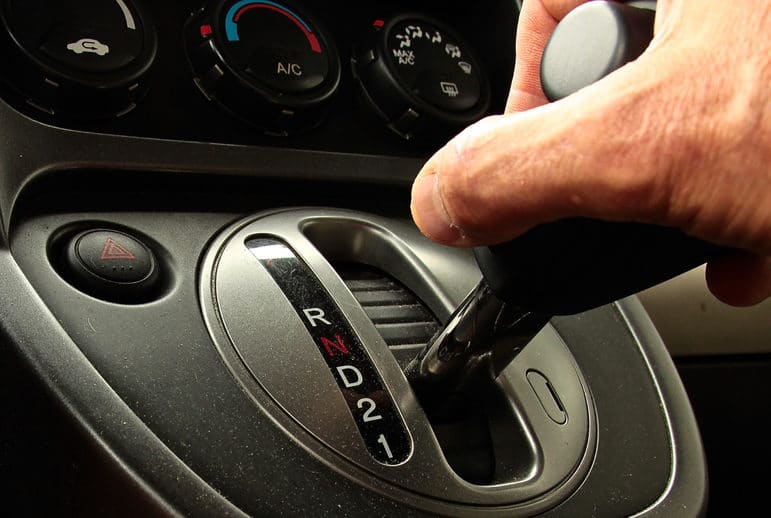ACCELERATION LANE
Proven Driving School Marketing Ideas To Grow Your Business.
How to Start a Driving School in Florida: A Step-by-Step Guide

Here you’ll learn everything you need to start your Driving School in Florida
Compared to many states, Florida makes it relatively easy to establish a driving school. You still need to complete forms, and meet requirements, but the state seems to be driving-school friendly.
Florida driving schools may offer classroom instruction, behind-the-wheel training, or both. Some driving schools may also be able to administer testing for prospective drivers.
How to open your driving school in Florida
- Florida makes it easy to start a driving school.
- Driving schools need to be licensed, as well as their instructors. The owner does not need to be an instructor.
- Your driving school location generally is up to you.
- You must use written contracts with your students, but you do not have to keep student records—although you should, out of prudence.
- You can offer additional driving training courses which have to be approved by the state.
Driving School Licensing and Requirements
General requirements
To operate a driving school in Florida, you will need to be licensed by the state. Licenses are valid for 1 year from the date of issuance. There are no particular requirements to be an owner of a driving school, other than not being an employee of the Department of Highway Safety and Motor Vehicles or having been convicted of a crime.
Your application packet must include:
- A completed application form with an application fee of $50 and an original license fee of $200–if your Driving School is running branches, each branch must apply for a Driving School license. You must pay $15 per vehicle, also.
- You will also need to include a copy of your lease.
- A certified fictitious name filed with the State–note that you have to publish the fictitious name in a local paper OR Articles of Incorporation filed with the State.
- A copy of the student contract you will use in your driving school–the State provides a sample.
- If you are offering classroom instruction, a copy of the curriculum.
- Copies of valid certificates for insurance covering all vehicles used for behind-the-wheel instruction.
- Documentation for each certified instructor.
A fingerprint sample for the background check must be provided for LiveScan, but should not be included with the application.
Each owner of the driving school must have a background check.
The current regulations for driver training schools are available online.
Florida requires the following minimum liability insurance coverage:
- $10,000 personal injury protection
- $10,000 property damage liability coverage
The prudent driving school owner will take steps to carry more insurance coverage.
If you have employees, you must carry workers’ compensation insurance covering them–and you–in the event of injury while on the job.
<
Driving Instructor’s License
While no specific requirements are set for driving school owners, instructors must demonstrate qualification before they receive a license from Florida. The process to apply is outlined by the state, and must be submitted online. Driving School owners may also be instructors.
Instructors may not have suspensions or revocations on their license within 3 years of application, and must not have been convicted of a felony or misdemeanor within five years. Needless to say, driving instructors in Florida must have a valid driver’s license. Instructors must be at least 21 years old.
Driving instructor licenses last for one year, and a renewal application MUST be received at least forty-five days before expiration.
Driving instructors must
- Submit the completed application form along with the fee of $25.
- Get fingerprinted using LiveScan–the results will be sent to the department.
- Submit a Certificate of COmpletion for a 32-hour Driving Instructor Training Course (DITC) or 8 hour DITC refresher course.
- Include a letter of employment from a driving school.
Driving school instructors may receive a temporary certification by completing the Driver Performance Analysis System test. Assuming you pass, you must take the next available DITC to keep your license.
Location
Florida appears to have no set rules for your business location. We’ll note here some requirements/recommendations/practices from other states which may be helpful to you.
- You should plan on 15-20 square feet per student for classroom space.
- Your office space should be 150-200 square feet, allowing members of the public to meet with you if you want–you may run your school out of your home.
- Conspicuous signage at a rented office is probably a good idea, and maintaining regular hours of operation certainly is.
- Don’t suggest in any advertising that students are guaranteed to pass either the written or road tests because of your instruction–you may brag about your pass rate.
- You should probably make sure you office isn’t near a motor vehicles office, and
- Don’t use the sites of road tests in your area–this is a requirement.
Contracts and Records
You must have written contracts with your students. The state provides sample contract language for you to use, and you should be guided by it. Note that they are to be preprinted and prenumbered.
Florida does not require the retention of student records. It might be prudent for you to keep detailed records, however, in the event any questions are raised. Most states require retaining records for three years, and those records include the following information:
- All payments from the student
- A copy of the contract/registration form.
- Full name, address, and driver’s license number
- Phone number and email address.
- Dates, times, and grades from classroom instruction.
- Dates, times, and grades from behind-the-wheel instruction.
- Date of course completion.
The Driving School Curriculum in Florida
Most public schools offer the 30 hour driver’s education courses to their students. You will be considered a driver improvement school. Driving schools may offer the following classroom-based driver training courses:
- The 4-hour Traffic Law and Substance Abuse Education (TLSAE) course–required of all new drivers (although it is included in the full driver education course offered in school).
- The Basic Driver Improvement (BDI) course
- The Advanced Driver Improvement (ADI) course
- The Mature Driver Discount Insurance (SCDI) course.
Teaching the TLSAE requires submission of an application as well as all instructional materials. You will have to provide the qualifications you look for in instructors, as well as the training received by instructors. The course is your own, proprietary course. The application package details the information you need to include in your course.
The BDI and ADI courses are for people who have gained points on their license, who want to avoid points/convictions, or who have a suspended license. Each course has specific requirements designed to help people overcome their driving issues, and the requirements are spelled out in Chapter 15A-8 of the Florida Administrative Code.
The SCDI allows senior citizens to receive an insurance discount. The course must address driving conditions in Florida, and provide ways for drivers to avoid collisions.
In Florida, new drivers have to complete 50 hours of supervised driving in addition to time driving as part of driver’s education. Supervised driving requires a licensed driver to be in the front seat next to the driver. The supervising drivers may be driving instructors, parents, guardians, and others. To count as a supervising driver in Florida, the person must either be a driving instructor, or
- A licensed driver who is a member of the family and over the age of 21 years
- A spouse of at least 21 years old
At least 10 of the 50 hours must be completed at night. Use the state’s Log of Supervised Driving Practice to track your time.
These hours can be accumulated via driving school behind-the-wheel instruction in Florida.
Commercial Driver’s License Instruction
Providing instruction for students pursuing a CDL in Florida generally follow those for the regular driver’s license. Differences are noted here.
The school must be licensed under Chapter 1005 of the Florida Statutes. The forms are available at the website of the Commission for Independent Education.
The Instructors must have a CDL Class A license, and pass appropriate written and road tests. The application form is the same as for a regular instructor’s license.
Starting a Small Business in Florida
Your driving school is not just subject to the requirements for driver’s education in Florida. You also need to establish your Driving School as a small business, and have to consider a number of factors. The form of business you take up, as well as the procedures, are appropriate topics of conversation with your lawyer and accountant. The considerations we offer here are not legal advice, but should provide you with things to think about as you set up your business.
Business Registration
All businesses need to register in Florida, especially the business name—the “doing business as” certificate. Banks may not be willing to set up your account until you have that DBA form. We’ll include where to register in the business structures below.
You will also need to obtain a Federal Employer Identification Number. Banks may need it for your business accounts, and you may be wanting to employ people. To obtain an EIN, go to the IRS website and complete the application form you find linked there.
Check with your County Tax Collector to see if you need a license. See if you also need to register with the Department of Revenue.
Business name
Before you get going, you’ll want to check to see if the business name you want is in fact available in Florida. You can search the Florida database, as well as visit the office of the county recorder.
Once you know your business name is available, you can reserve it online with the Secretary of State–if you’re forming a corporation or LLC.
Sole Proprietorship
Owning your own business is the easiest one to set up, but also may open you to liability concerns. As a sole proprietor, your business is simply part of your life. You keep a separate set of books, and complete a Schedule C for your 1040 form every April.
Sole proprietorships can expose the proprietor for full liability, even with insurance. That may mean that if you are sued, you may lose your home and property, as well as your personal bank accounts and other assets. This risk may not be worth the ease and independence.
In Florida, the big step you have to take is to register your Assumed Business Name with the recorder of each county in which you have a place of interest.
Corporations and LLCs
You may set up a full corporation (“Inc.”) as your business structure. Corporations limit your liability for loss to your investment in it, as a general rule (although banks may require you to be obligated personally if you take out a loan to get your business going). This form of business keeps your personal assets safe.
As an owner of a corporation, you’ll have to set up your driving school consistently with the rules for corporations in Florida–those rules can be found at <this state run website>. You’ll also have to decide whether to be an S Corporation or a C Corporation. Generally, the S Corporation form is set up for small businesses. It allows income and taxes to pass through to the owners. You will want to discuss these forms with your attorney and accountant.
You may be able to set your driving school up as an LLC in Florida. The LLC form provides the same limited liability as a Corporation, but do not have to comply with the corporate formalities most states require, including items like bylaws, required stockholder meetings, and minutes (although minutes of meetings are probably a good idea).
You’ll have to discuss the advantages and disadvantages for the LLC with your attorney and accountant.
Both Corporations and LLCs file with the Secretary of State. In addition to name reservation, you’ll need to submit the following.
- Corporations submit Articles of Incorporation
- LLCs submit Articles of Organization
Now What Do I Do?
Once you’ve complied with all the legal requirements to be both a driving school and a small business in Florida, you need to get students.
Getting students requires marketing—largely on the internet. You will need the following systems set up to obtain students:
- A website—focused on the types of students you want to attract, and aimed at your locality.
- The website should also include a blog, which allows you write about a variety topics and engage in Search Engine Optimization—which will drive traffic to your site.
- A Facebook page, linked to your website, to become noticed and drive traffic.
- Getting testimonials from successful students.
Marketing is something you will have to devote time to. DrivingSchool.Marketing can help you get the best bang for your marketing buck.
Conclusion
Florida is nicely straight-forward for driving schools. Most will be offering behind-the-wheel instruction only, but may choose to add the TLSAE. Since you can operate from your home, the behind-the-wheel only model may be your best bet.
Disclaimer: This page is part of DrivingSchool.Marketing’s series of state and provincial pages designed to help entrepreneurs like you start driving schools. States change their regulations, or the web pages they host their forms. While we believe these rules are accurate as of the date of publication, we cannot guarantee full accuracy. Please let us know if you spot any problems.
Josh Meah
Latest posts by Josh Meah (see all)
Copyright 2020 All Rights Reserved. All digital marketing services are managed by JoshMeah.com







